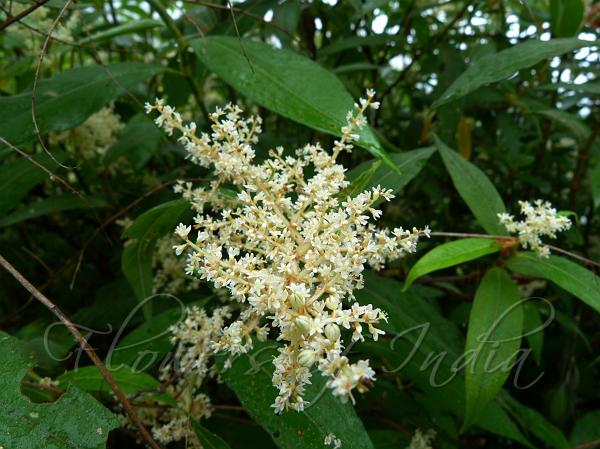|
| Sikkim Knotweed |
|

|

| File size | 461895 |
| Original date | 6/25/11 10:33 AM |
| Resolution | 2048 x 1536 |
| Flash | Flash did not fire, auto |
| Focal length | 4.5mm |
| Exposure time | 1/125s |
| Aperture | 4.0 |
| Focus Distance | |
| Metering Mode | Multi-segment |
| Camera make | Panasonic |
| Camera model | DMC-FZ40 |
| Sensor type | OneChipColorArea |
|
|
|
|
Photo: |
Botanical name: Koenigia mollis Family: Polygonaceae (Knotweed family)
Synonyms: Polygonum molle, Aconogonum molle, Persicaria mollis
Synonyms: Polygonum molle, Aconogonum molle, Persicaria mollis
Sikkim Knotweed is an erect, 2-3 m tall, softly
hairy, branched, perennial herb or undershrub. Stem is often
dichotomously branched, round, hairy, rarely hairless. Leaves are 7-18
cm long, 3.0-6.0 cm wide, elliptic-lanceolate, velvety above, hairy
below. Ochrea are ovate, tubular up to 5 cm long, membranous. Flowers
are borne in a large, richly branched, thyrsoid, velvety panicle, at
branch ends. Flowers are 3-3 mm across. Tepals are 5, creamy white,
1.5-3.0 x 0.5-1.2 mm, oblong-inverted-lanceshaped, blunt. Stamens are
8, with long threadlike filaments. Ovary is 0.5-1.5 x 0.25-0.5 mm,
trigonous, styles 3 with head-like stigmas. Nuts are included within
the reddish black fleshy tepals, exserted up to half or one third of
its lengths, forming a baccate fruit, 2-3 x 1-1.5 mm, trigonous, brown,
shining. Sikkim Knotweed is found in C. and E. Himalayas, Garhwal to
Assam, eastward to China. Flowering: July-September.
| Identification credit: Tabish | Photographed in Lachung, Sikkim. |
• Is this flower misidentified? If yes,